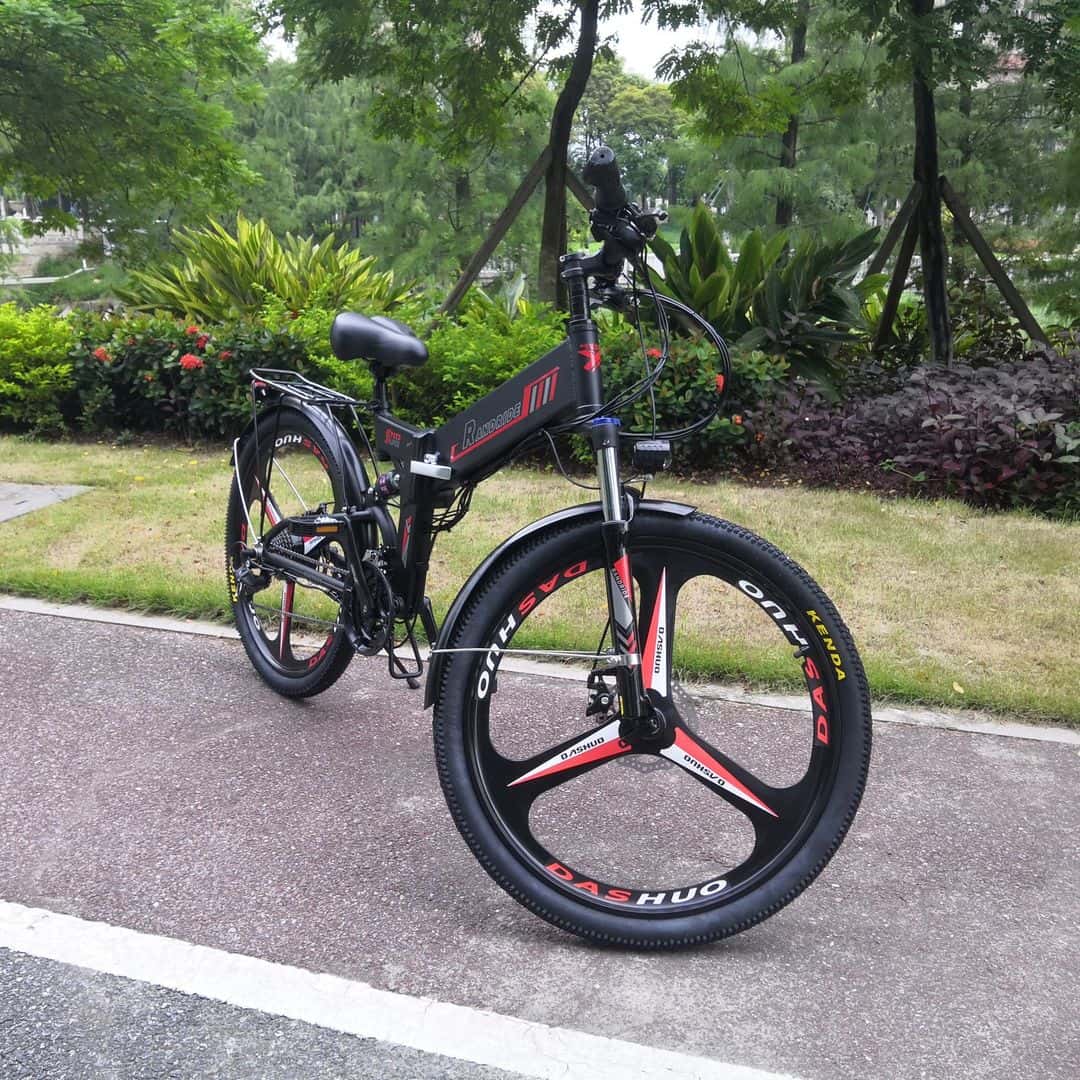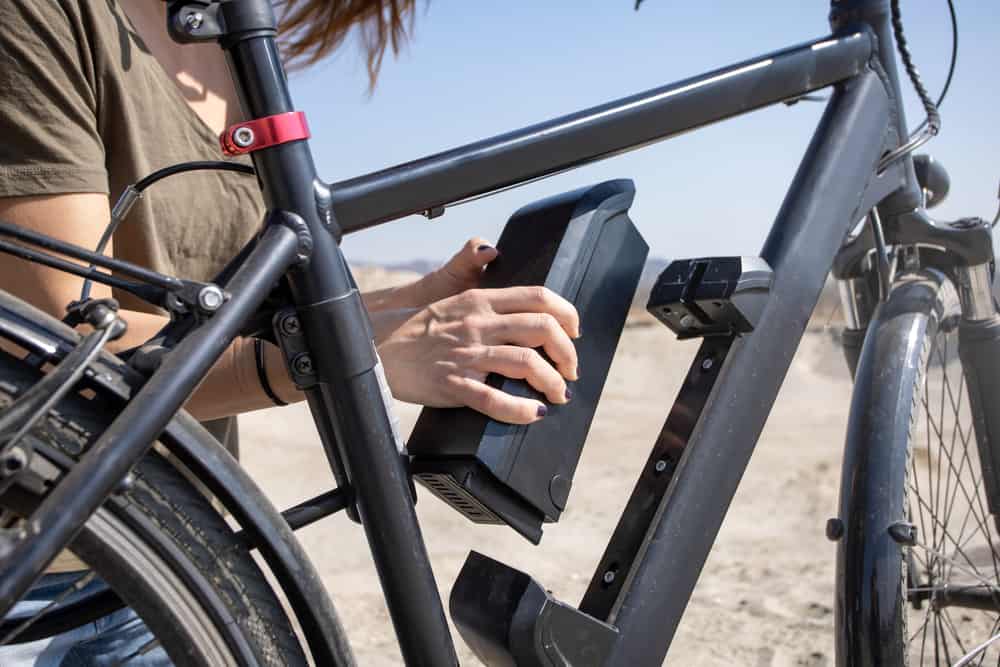Do you own an electric bike? Expectedly, like many other owners, you may be concerned about the battery’s life.
Not only will I answer the question “How long does E-bike battery last?” below, but I’ll also explore what happens when they reach the end of their lifespan.
Furthermore, I’ll discuss the best time to replace your batteries – and what you can do to make them last longer.
Let’s begin.
Table of Contents
How Long Does an Electric Bike Battery Last?
Electric bicycles, as the name suggests, are equipped with motors that provide some pedaling assistance. As such, they’re easier to ride on rough terrains and inclines.
The bike’s power is supplied by batteries, which can last anywhere from 1 to 5 years. Of course, this depends on a lot of factors, including:
Battery Type
- Lithium
Lithium batteries usually last for 2-5 years. In other words, this battery type can withstand a total of 1,000 charging cycles.
While it’s true that it can last for about eight years, this rarely happens because of usage and storage, among many other things.
Apart from being long-lasting, the lithium-ion battery is very portable. A rider can fit 2-3 in the E-bike, which could help the bike run for as much as 100 miles (160 km.)
The only caveat to Lithium batteries? They’re expensive – and could take as much as 1/3 of the bike’s total cost.
- Nickel
On the other hand, bikes powered by nickel batteries can only last for 2-3 years. That’s because this type of battery can only handle a maximum of 500 charging cycles.
Nickel batteries are cheaper than Lithium, but they’re also equipped with a high power density.
- Lead
Meanwhile, bicycles with lead batteries could only accommodate 300 charging cycles. That means the battery’s capacity will diminish after only a year of use.
Considering that, it means you’ll go through 4-5 lead batteries before your Lithium batteries finally give up.
Do note that this lifespan is proportional to the battery’s price. Lead acid is the cheapest of all the types on this list. And, despite this reduced capacity, lead acid batteries can generate high currents. Simply put, they can make your bike a mighty one!
Quality
Quality can affect the life of the battery as well. Top-tier manufacturers such as Panasonic, LG, or Samsung produce great batteries compared to cheaper brands. Expectedly, they last for long periods of time.
What Happens When the Batteries Reach the Maximum Charging Cycle?
When Lithium batteries complete 1,000 charging cycles, when Nickel batteries last 500, and when the lead goes through 100 cycles – the battery’s capacity will be significantly reduced. In other words, you will need to recharge it more frequently.
When Should You Replace Your Batteries?
You should change your Ebike batteries once they have reached their peak usage. For lithium, it’s 2-5 years; for nickel, it’s 2-3 years; and for lead, it’s a year.
That said, you may need to replace it earlier than intended if its performance has dramatically reduced. If it doesn’t run as long as it did or needs more charging than usual, it’s a sign that your old batteries have to go.
For tips on selecting replacement batteries, make sure to scroll down this article.
How to Make Your E-Bike Battery Packs Last Longer
As mentioned, Ebike batteries can last for as long as five years. But if you want to achieve a longer life span and make the most out of your battery’s capacity, then you need to follow these tips:
1. Avoid Overcharging
It’s easy to overcharge your Ebike batteries, especially if you’re busy. But if you want them to last, then avoid doing it! After all, this reduces the number of complete charge cycles it can go through.
Eventually, this habit will decrease your battery’s lifespan for good.
That said, you need to keep your bike’s batteries charged anywhere from 30% to 80% to prevent undue damage.
2. Let the Batteries Cool Before Usage
While it may be tempting to use your Ebike batteries after charging them, don’t. Remember: charging the battery generates heat – as is using it.
As such, let them cool first before you go on your merry old way. Doing so will help make your batteries last longer.
3. Store the Bike/Batteries in a Cool Place
The hotter it is, the lower the battery’s capacity will be. That’s why you shouldn’t leave your Ebike underneath the hot scorching sun.
Generally speaking, make sure to store your bike – or your fully charged battery – in a cool place, particularly with a temperature of 20°C (68°F.)
Be mindful of where you put the batteries as well! It’s flammable, so it should be tucked away from a heat source.
Tip: While batteries are best stored in a cool place, take note of the temperature before doing anything. It should be above freezing before you charge them!
4. Keep the Batteries Partially Charged
If you don’t plan on using your Ebike batteries soon, charge them to 40% to 80% power before storing them. Doing so will help prolong battery life by reducing the stresses on the battery management system.
Remember: Li-ion batteries are self-discharging by nature. As such, storing an almost-empty battery can lead to cell damage, especially if the voltage drops to a certain point.
Do note that different batteries have different storage recommendations! So if yours recommends a lower voltage, make sure to follow it.

randridebikes
5. Don’t Discharge Your Batteries Completely
As mentioned, it’s best to keep your batteries partially charged. Although it seems reasonable to fully discharge it, it’s actually the opposite.
According to Battery University, discharged lithium batteries get fewer charging cycles – only 300-500, to be exact. However, a battery with 50% capacity can last for as much as 1200-1500 charging cycles.
6. Check Your Batteries Regularly
Again, if you plan on storing your batteries for a long time, you’ll need to check them every so often.
Ideally, you should look at the battery indicator every winter. If the voltage has dropped below 40% (or the recommended storage voltage), it’s time to use your chargers to boost the batteries.
Tip: If your bike doesn’t have a battery indicator, a good rule of thumb is to charge it for 30 minutes every few months.
7. Protect the Batteries From Water
Yes, you can ride your E-bike in rainy weather. However, you should avoid getting the batteries in the water.
According to the Bicycle Retailer, lithium batteries get damaged when fully or partially submerged in water. Moreover, you can expect worse damage if your bike gets compromised by saltwater.
The same thought goes when cleaning your Ebike. It shouldn’t be cleaned with a steam pressure washer, as the water can affect the battery components.
Remember: not only will the water damage the batteries, but charging them afterward can lead to fire too! Like stored batteries, water-submerged ones should be kept from flammable materials.
8. Remove the Batteries During Transport
Let’s say you’re considering using your Ebike in a faraway place, so you’re planning to load it on your car/truck. Before you do so, make sure to remove the battery components first! The vibrations can damage your battery, making it last shorter than it should.
9. Use the Right Charger
For best results, charge your Ebike with the device that came with it. This will prevent overcharging and surges that may end up short-circuiting the battery.
And, should you need a replacement, see to it that it’s compatible with your E-bike batteries.

iver_lt
How to Choose a Battery Replacement
Let’s say that your batteries have reached the end of their lifespan. Unless you’re planning to buy the same thing, you will need to consider several factors before making a purchase.
1. Voltage
Most Ebikes need 36 or 48 volts. If you choose the lower one, you won’t have enough power to run your system.
2. Ampere
The ampere is the measurement of your bike’s torque. The more amperes from your battery, the higher the torque is.
3. Battery Type
As mentioned above, there are three types of batteries available. The most expensive is Lithium, which lasts the longest at 2-5 years. Although it’s more costly, it’s portable.
The mid-priced option is Nickel, which can last anywhere from 2-3 years. Despite this limitation, it can generate a lot of power.
The last option is lead acid, which is the cheapest of them all. Although it provides a lot of power, this battery can only last a year max.
Conclusion
Lithium Ebike batteries last 2-5 years, depending on usage and storage conditions. Nickel batteries last for a mere 2-3 years, while lead acid batteries only have a year tops.
To make the most out of your battery life, you need to:
- Avoid overcharging your bike
- Let the batteries cool before usage
- Store the batteries in a cool place
- Keep the batteries partially-charged
- Don’t discharge the batteries
- Check the batteries regularly
- Protect the batteries from water
- Remove batteries during transport
- Use the right charger
How long did your Ebike batteries charge you? Share your care/maintenance tips below!
